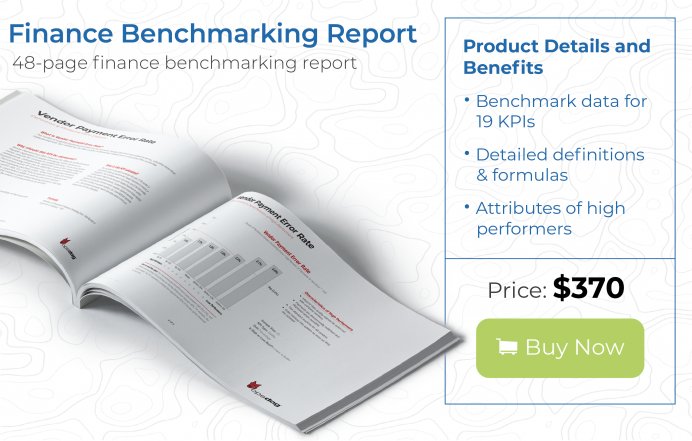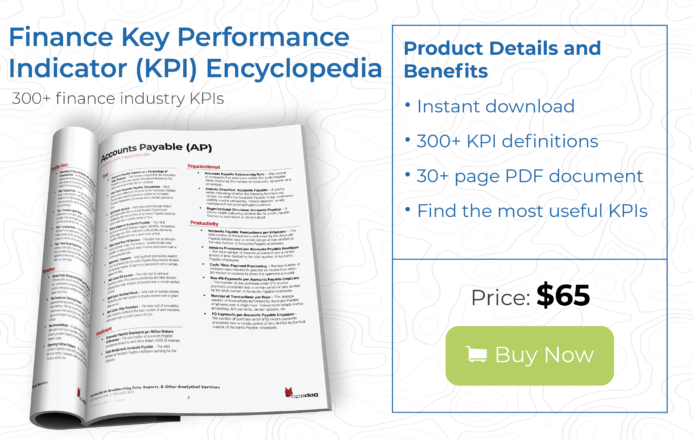The payroll function handles high transaction volumes for repeatable activities making it a great target improvements in accuracy, efficiency, and productivity. And as a cost center, these improvements can have a direct impact on an organization’s bottom line. Best in class Payroll metrics can highlight the areas in the payroll function that can benefit from automation, process improvements, and employee training.
What is a Payroll Metric?
The payroll function is responsible for more than just issuing paychecks to employees. Payroll departments interacts with other business functions; keeps track of pay, benefits, and deductions; adheres to regulations governing compensation; handles employee questions and resolves problems; and delivers management and statutory reporting.
This defines best in class Payroll metrics measure how well the payroll function—and all of its moving parts—performs. There are several types of metrics the finance department can use:
Key performance indicators (KPIs), often represented as percentages or ratios, analyze and track the performance of different payroll activities by organization, work group or individual employees.
Key risk indicators (KRIs) measure the amount of risk an activity poses to an organization and the impact of that risk on business performance. KRIs help identify the biggest risks in payroll—most likely related to regulations such as The Fair Labor Standards Act (FLSA) or IRS tax requirements–and help managers mitigate those risks.
KPIs and KRIs can be quantitative or qualitative. Quantitative measures are based on data such as the number of inaccurate paychecks or the amount of time it takes to process. Qualitative measures are subjective such as employee morale or engagement in the payroll function.
While quantitative measures typically come directly from transactional systems, finance departments can collect data for qualitative measures from surveys, interviews, or other opinion or sentiment-based sources.
How Finance Departments Can Use Payroll Metrics
Payroll is a significant business expense, so it makes sense for finance departments to use best in class payroll metrics to reduce costs. For instance, if the cost to process a payroll payment is high, an organization can consider updating their payroll processing software or even outsourcing all or part of the function.
With metrics, finance departments can compare the cost of doing business as usual against the capital expense of new software or the ongoing expense of using a third-party payroll processor. Or, the organization can focus on employee training, teaching payroll employees how to process payroll more efficiently or teaching employees how to complete travel and expense reports without missing information.
While the goal of the finance department is to reduce overall payroll processing costs, reducing headcount may be the most obvious but not necessarily the most important change to make. Best in class payroll metrics can also alert organizations to other reasons costs are high, such as poor data integrity, complexity of the payroll structure, and overburdensome company policies.
Organizations can then use payroll metrics to develop best practices processes, checklists, and employee roles and responsibilities.
Best in Class Payroll Metrics Examples
There are many different payroll metrics that finance departments can use to measure the efficiency and productivity of the payroll function. Here are five of the most widely used payroll metrics:
Best in Class Payroll Metric #1: Payroll Staffing Ratio
Payroll staffing ratio calculates how over- or under-staffed the payroll function is But a high payroll staffing ratio—meaning that the company has a large number of payroll staff compared to the number of total employees—could be because staff must pay commissions and referral fees in a complicated compensation structure.
To lower the payroll staffing ratio, consider automating more payroll processes, cross-training staff to handle multiple tasks, and changing staff scheduling. Or, consider outsourcing all or part of the payroll function to a third-party. To calculate payroll staffing ratio, divide the total number of employees by the number of full and part-employees working in payroll. Don’t include payroll staff who work for third-parties.
Best in Class Payroll Metric #2: Travel & Entertainment (T&E) Expense Payments per Employee
This metric measures how productive and efficient a firm’s expense management function is in reimbursing employees for business-related travel and entertainment expenses by dividing the number of payments completed by the number of employees responsible for managing and processing these payments.
Automation isn’t the only way to improve this metric. Make sure that expense policies are clear and use pre-approvals to minimize disputes. To cut down on the back-and-forth to collect missing or incorrect information, clearly document how to submit T&E.
Best in Class Payroll Metric #3: Labor Expense as a Percentage of Total Revenue
Labor costs have a direct impact on the bottom line, and many finance departments want to reduce the costs for wages, benefits, and payroll taxes to increase revenue. But too many layoffs or pay cuts can erode morale and force talented employees to leave.
Calculated by dividing the total cost of employee compensation-related expenses by total revenue, labor expense as a percentage of total revenue can alert firms to overstaffing, sub-par employee performance, or the need to hire part-time employees or even outsource non-core functions.
Best in Class Payroll Metric #4: Payroll Processing Accuracy Rate
Employees rely on their employer to pay them fairly, accurately, and on-time. In this function, employees are the customers. Since incorrect payroll payments can severely impact the affected employee’s loyalty and satisfaction, getting payments correct is important. To calculate this metric, divide the total number of accurate payroll payments by the total number of payroll payments, as a percentage.
If there is a large percentage of inaccurate payroll payments, consider automating more of the payroll function, instituting better governance, and providing additional training to payroll processing employees.
Best in Class Payroll Metric #5: Cost per Payroll Payment
If the cost to process a payroll payment is high, it’s likely due to inefficiencies in the payroll function. Too many manual processes, lack of clear processing and submission standards, and un-trained employees can all lead to increased costs.
To calculate cost per payroll payment, divide the labor, technology, and other overhead costs related to running the payroll function by the number of payments processed.
Final Thoughts
Long viewed as a transactional processing function, the payroll function is actually much more complex, with many moving parts. Each of these parts provides an opportunity for improvements that can reduce the cost of the payroll function, improve compliance, and keep employees satisfied that the organization cares enough about them to get an accurate paycheck in their hands-on time.
For a full list of best in class payroll metrics and payroll benchmarks, download our Finance Benchmarking Report here.
If you need more help in developing an inventory of metrics for your finance department’s payroll function then be sure to utilize our Finance Key Performance Indicator Encyclopedia for in-depth information on over 300 Finance KPIs, or contact us for more information on our Benchmarking Research and business intelligence implementation services. We will help you benchmark your finance and payroll departments and provide you with presentation-ready, high-quality deliverables at an affordable price.




